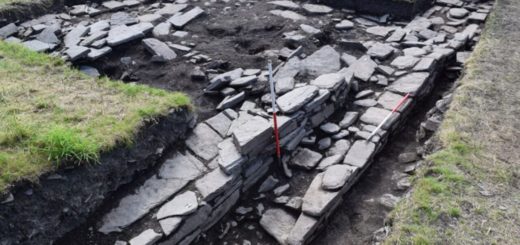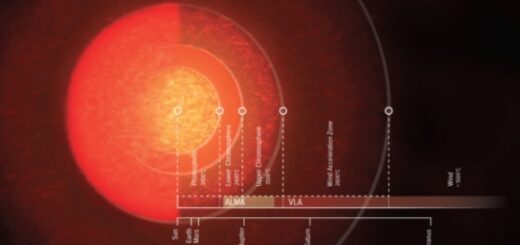Monumental 5,000-Year-Old Elite Tomb Discovered In Ukraine – Reconstructed
Scientists reconstructed the monumental 5,000-year-old tomb discovered on the border between Ukraine and Moldova. The tomb belonged to a representative of the elite of the community of nomadic shepherds.
“This is the most complex tomb that we have discovered during the excavations carried out since 2010,” said PAP Dr. Danuta Żurkiewicz of Adam Mickiewicz University in Poznań, Poland.

The burial is located within the barrow cemetery near the village of Prydnistryanske (Vinnytsia region) on the border of the Ukraine and Moldova near the Dniester.
Members of the community living in this area 5 thousand years ago were mobile shepherds – they moved over longer distances with carts. Consequently, no permanent settlements were built, which is reflected in the lack of discoveries of houses from this period by archaeologists.
However, cemeteries played an important role for these people, who erected monumental burial mounds, which played an important role in the life of the community. Unfortunately, the remains of these ancient cemeteries are today almost impossible to recognize.
A team of Polish-Ukrainian archaeologists have excavated several few mounds and discovered that in this community adult males, for whom monumental mounds were erected after their death.
Scientists drew particular attention to the burial, which was made with great care amd they decided to reconstruct this burial place. Other burial chambers discovered at the site, were partially rebuilt with wood – with roofing made of battens.
In this case, it was different. The rectangular pit was covered with four well-matched limestone slabs. In addition, it was protected from top and bottom with a woven mat – its residues in the form of prints and the organic layer were clearly visible. The interior of the tomb had additional roof made of ash wood. Inside rested a nearly 1.9 meters tall man.
“This is not a typical height for the contemporary community. The man had to stand out with his stature” – said Dr. Żurkiewicz.
The analysis of the skeleton showed that the deceased suffered from rheumatic changes in the upper extremities and degeneration of the spine. The observed pathologies indicate substantial physical activity and the presence of mechanical stresses associated with the nature of performed work – perhaps frequent horse riding. The man died at the age of 35-50 years.
In the tomb, archaeologists found a lump of ochre (red dye). Stone slabs covering the burial chamber were also partly covered with ochre.
Preliminary results of the work, including the elite tomb, were published in the yearbook “Baltic Pontic Studies”.



 Creators of mankind
Creators of mankind Description of “Tall white aliens”
Description of “Tall white aliens” Where they came from?
Where they came from? About hostile civilizations
About hostile civilizations The war for the Earth
The war for the Earth “Tall white aliens” about eternal life
“Tall white aliens” about eternal life Video: “Nordic aliens”
Video: “Nordic aliens” Aliens
Aliens Alien encounters
Alien encounters The aliens base
The aliens base UFO
UFO Technology UFO
Technology UFO Underground civilization
Underground civilization Ancient alien artifacts
Ancient alien artifacts Military and UFO
Military and UFO Mysteries and hypotheses
Mysteries and hypotheses Scientific facts
Scientific facts


















